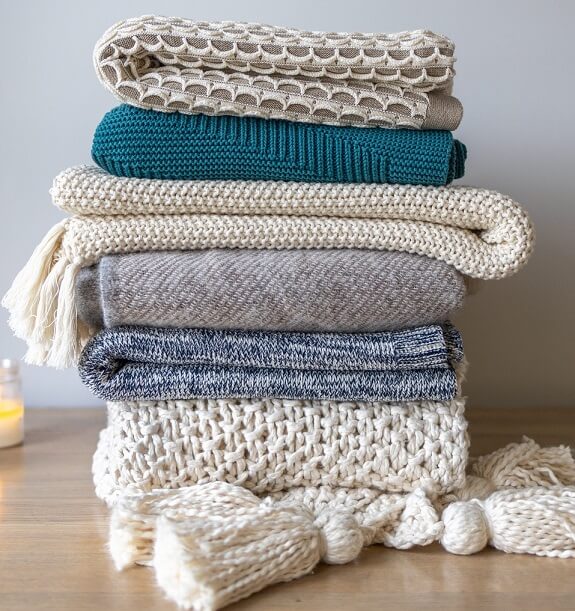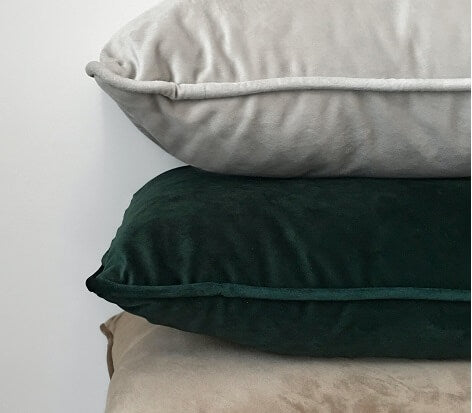It is said that "Good sleep is the best meditation." But how often do you think about the tools that support you in achieving that sweet slumber? For instance, do you know how long do memory foam pillows last? The lifespan of your pillow can directly influence your sleep quality. Let’s find out more about these cushions of comfort in the sections below.

What is a Memory Foam Pillow?
The term "memory foam" refers to a unique type of material also known as viscoelastic foam. This material is renowned for its ability to react to heat and pressure, qualities that allow it to perfectly contour to the shape of your head and neck as you sleep. When you rest on a memory foam pillow, it adjusts to your specific form, delivering custom support while relieving stress on pressure points. This makes memory foam pillows a preferred choice for individuals who suffer from discomfort in their neck and shoulders, or for those whose sleep positions vary throughout the night.
The Typical Lifespan of Memory Foam Pillows
On the whole, memory foam pillows outlast their traditional counterparts by a significant margin. A well-constructed memory foam pillow can retain its shape and provide consistent support for anywhere between 18 months to 3 years. Comparatively, other types of pillows, like those filled with feathers or fiber, often show signs of wear and tear after just a year of use. The superior durability of memory foam pillows is attributed to the properties of their main component: dense and responsive viscoelastic foam. This type of foam maintains its shape and continues to offer solid support for a longer period than most other pillow materials. So, in the quest for understanding how long memory foam pillows last, remember that their lifespan beats the industry standard by quite a stretch.
People often wonder...
- How often should I replace a memory foam pillow? Usage is the biggest factor that determines how long a memory foam pillow lasts. It does usually last around 2 to 3 years but there are many factors that play a role. If you use it more, it will last a shorter period of time but if it is just for regular sleep you should get 2 to 3 years of use out of it.
- How do you know when an memory foam pillow is worn out? The very first sign is if it loses its shape. The simple test is to ask yourself if it still has the same shape as the day you bought if or not. If it starts getting lumpy, loses its firmness or starts sagging, you should look at replacing it.
Factors that Influence the Longevity of Memory Foam Pillows
The durability of a memory foam pillow isn't solely based on the type of foam it's made from, but is also influenced by a variety of factors. One key factor is the quality of the foam. Dense, high-quality pillows memory foam generally has a longer life expectancy. The frequency of use also plays a crucial role. Pillows that are used every night will degrade faster than those used sporadically or seasonally.
The condition in which the pillow is maintained significantly affects its lifespan as well. Regular cleaning can help in preserving the foam, but remember to be gentle as memory foam doesn't react well to water. Conversely, an accumulation of sweat, oils, and dirt can hasten the breakdown of the foam.
Storage conditions can also affect the longevity of your memory foam pillow. The foam tends to degrade faster when stored in places with high humidity or temperature. Hence, keeping your pillow in a cool, dry place when not in use can extend its lifespan.
In short, the quality of the foam, usage frequency, maintenance and storage conditions are all crucial factors in determining how long a memory foam pillow can last. By paying attention to these factors, you can ensure that your pillow provides you with optimal comfort for as long as possible.

Signs That Your Memory Foam Pillow Needs Replacing
It's crucial to understand when your memory foam pillow needs to be replaced to maintain a quality sleep routine. The first noticeable sign is a change in the form of your pillow. If it fails to return to its original shape or if you find it becoming lumpy and uneven, it's a signal that the pillow's life has run its course. In addition, if you're experiencing frequent allergies or disturbances in your sleep patterns, these could be signs of an aging pillow. Other noticeable indicators could be visible wear and tear such as discoloration. An unusual or persistent odor post-cleaning is another red flag. Recognizing these signs timely can help you ensure the longevity of your pillow and maintain a healthy sleep routine.

So simply remember to look for the following signs that it is time to replace your pillow:
- Lots of stains
- I am getting aches and pains
- Starting to smell bad
- Having more difficulty sleeping
Extending the Life of Your Memory Foam Pillow
The longevity of your memory foam pillow can be boosted significantly with just a few simple care routines. It is always recommended to utilize a pillow protector, as this barrier helps prevent body oils and perspiration from penetrating the foam, thereby preserving its quality. For cleanliness, the protector should be laundered regularly. If you're wondering how to wash memory foam pillow surfaces, it's important to note that memory foam should never be fully immersed in water. Instead, opt for spot cleaning when necessary—this method maintains the integrity of the foam and prevents premature deterioration, ensuring your pillow stays supportive and comfortable for years to come.
To maintain the pillow's shape and freshness, fluff it daily. This simple act also allows for air circulation within the foam, which aids in the evaporation of any moisture it may have absorbed.
When the pillow is not in active use, it is important to store it appropriately. As we learned earlier, memory foam degrades more quickly in high-temperature or high-humidity environments. Therefore, ensure to store your pillow in a cool, dry location. These straightforward tips and habits can be easily incorporated into your routine and can significantly extend the life of your memory foam pillow.
The Benefits of Regularly Replacing Your Pillow
While it's important to understand the lifespan of a memory foam pillow, it's equally critical to recognize the advantages of changing it out periodically, regardless of its projected durability. Fresh pillows offer an optimal level of support to your head and neck, lessening the odds of waking up with stiffness or discomfort. They can also provide a fresh line of defense against allergens. Over time, dust mites and other allergens can build up in pillows, leading to allergy symptoms. Swapping out your pillow regularly can reduce this accumulation and mitigate allergic reactions. Moreover, there is something incomparably refreshing and comforting about resting your head on a brand-new pillow. This feeling of freshness can significantly contribute to achieving a satisfying and rejuvenating sleep. So, while your memory foam pillow may last for years, don't overlook the potential benefits of an occasional update.
FAQ
Do memory foam pillows last long?
Memory foam is another super durable pillow material, so they can last a long time, too. You may need to replace good memory foam pillows less than a typical pillow. You can most likely increase the replacement time to two to three years instead of one to two years.
How to refresh a memory foam pillow?
Fill a clean bathtub, sink, or basin with lukewarm water. Add a small amount of gentle detergent (approximately 1 tablespoon per gallon of water), and mix thoroughly. Submerge the pillow in the soapy water. Gently squeeze and massage the pillow to allow the lather into the memory foam, avoiding harsh movements
Can I machine wash a memory foam pillow?
Memory foam pillows offer exceptional support, but unlike down or down alternative pillows, they cannot be washed in a washing machine. The machine's harsh movement and dryer's heat can damage the foam, reducing the pillow's support.
What to read next?

Master the Art of Body Pillow Bliss: Unleash Maximum Comfort with These Expert Tips

Uncovering the Therapeutic Link: How Weighted Blankets Boost Mental Well-being

Uncover the Secret to Deeper Sleep with Hooded Blankets
What to shop

Contour Memory Foam Pillow with Orthopedic Head, Neck and Back Support
From $36.00

54"x 20” Cotton Body Pillow Cover | Various Colors
From $36.95

Memory Foam Travel Neck Pillow
From $25.95






